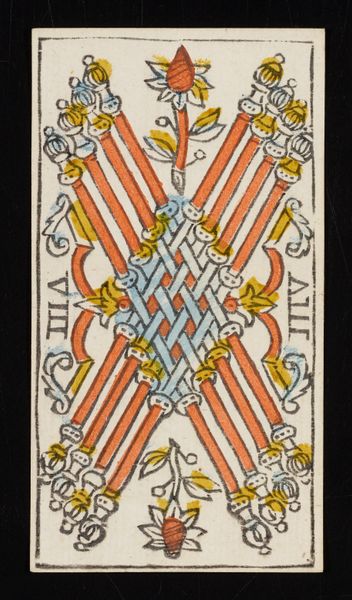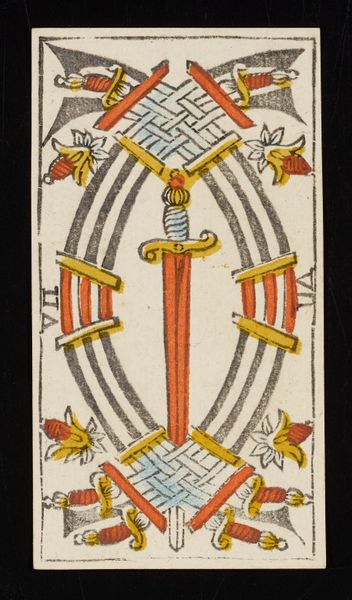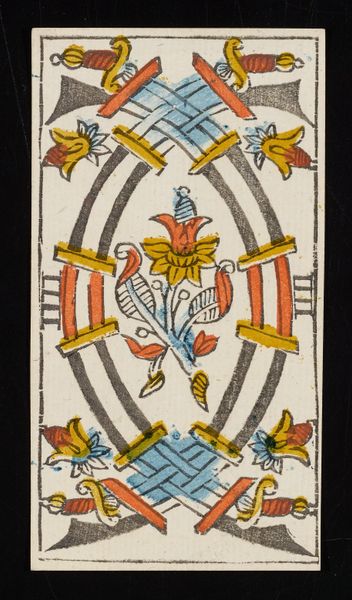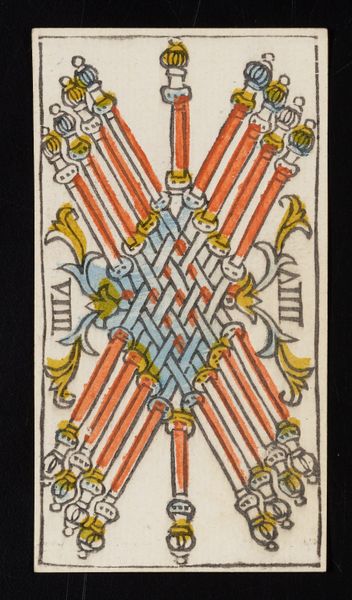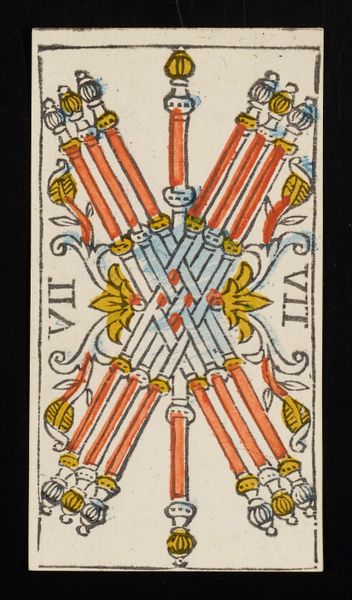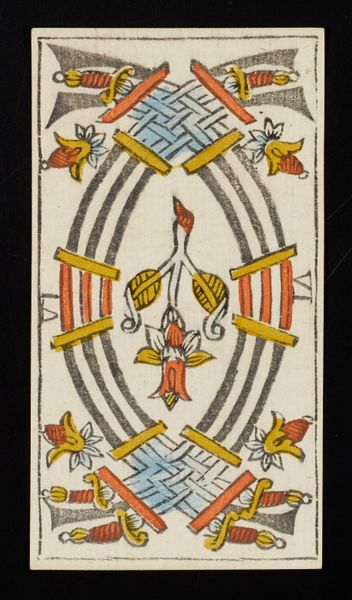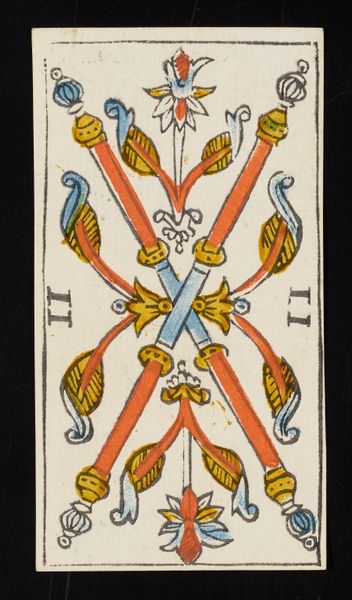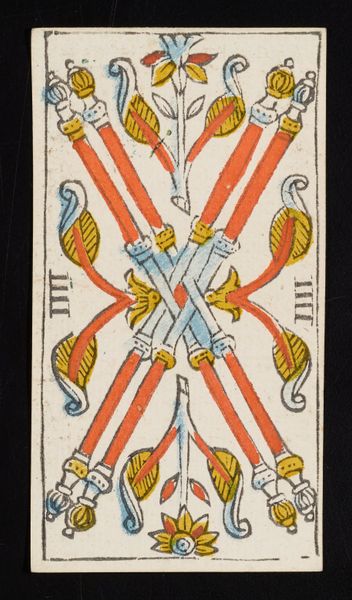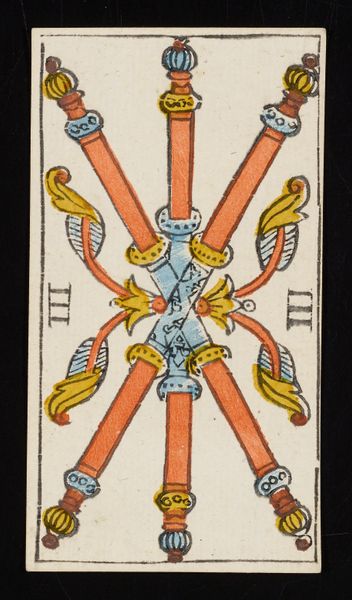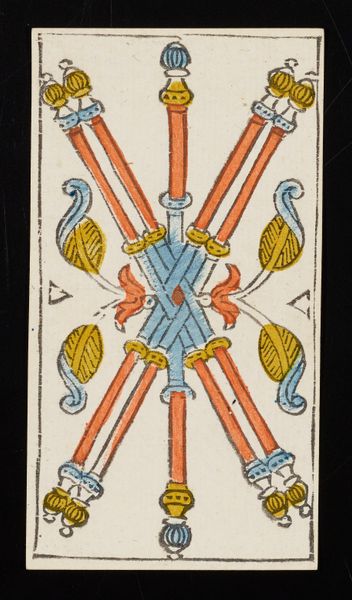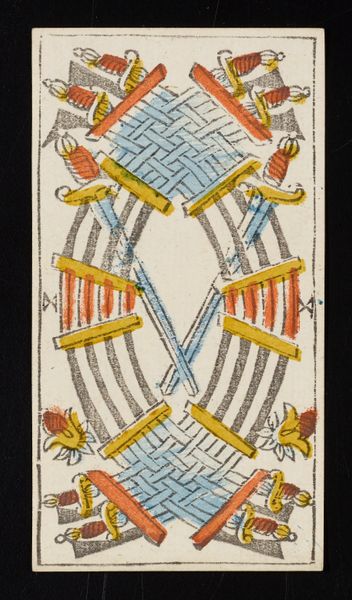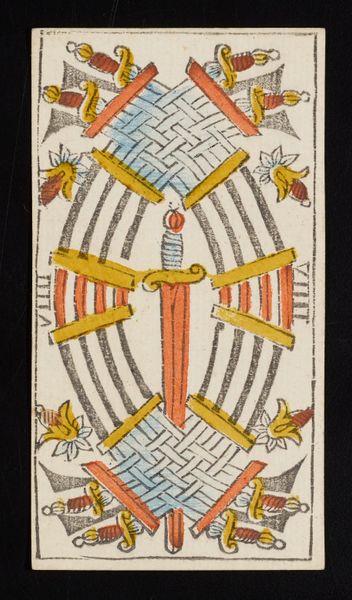
Dimensions: 4 7/16 x 2 7/16 in. (11.27 x 6.19 cm) (image, sheet)4 5/8 x 2 1/2 in. (11.75 x 6.35 cm) (sheet, each)
Copyright: Public Domain
Editor: Here we have Claude Burdel’s "Six of Batons," an engraving from 1751. The print is very small and features vibrant reds, blues and yellows. Something about the intersecting batons creates a mood that feels both celebratory and guarded to me. What's your interpretation of this piece? Curator: This tarot card speaks volumes about the societal context of its creation and consumption. The Marseille tarot tradition, to which Burdel's work belongs, circulated widely in 18th-century Europe, acting as both a game and a divination tool. The “Six of Batons," with its suggestion of victory or recognition, was entering a world rife with political instability. How do you think its symbolism might have been received then? Editor: I can see how in times of political unrest, simple imagery would be powerful. The suggestion of victory offered comfort, or maybe, sparked revolutionary thought. I wonder about the artist, though. Curator: The fascinating aspect is that Burdel, like many card makers, was often more of an artisan than an artist in the modern sense. These decks had a very public role, standardized across different makers. Notice how even this card, hinting at triumph, adheres to a template. The image’s authority comes not just from its symbolism, but also its wide circulation. How does that change your understanding? Editor: I didn’t really consider its mass appeal. So it’s not just about artistic expression but more about social communication. Curator: Precisely. These images become social currency. Editor: This helps me see that the role of art isn't limited to museums; art influences culture at many levels! Curator: Exactly!
Comments
No comments
Be the first to comment and join the conversation on the ultimate creative platform.

